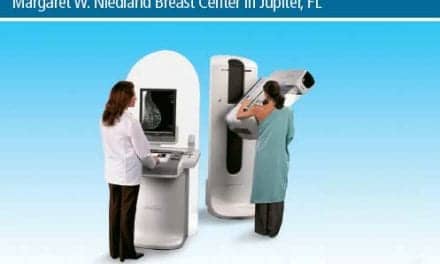In the next 5 years, accreditation mandates are going to be more prevalent. Now is the time to prepare for the future.

|
Since January 2007, when United Healthcare announced it would be tying accreditation to reimbursement for advanced imaging procedures (CT/CT angiography; MR/MR angiography; ultrasound; and nuclear medicine including PET) performed in a nonhospital setting, there has been much concern over the issue. Providers have debated the merits and necessity of becoming accredited—the cost, the time, the hassle—and while many have gone through the process, others have wrung their hands in despair. The two delays—from March 1, 2008, until the ambiguous date of “fourth quarter 2008″—have only added to the uncertainty and anxiety providers are feeling. Many are saying, “Maybe United will delay again [the current go date is fourth quarter 2009] or decide not to do this,” and choosing to take no action. I call that the ostrich approach to issues and am amazed how many providers are taking the “if I ignore accreditation, it will go away” stand.
To be blunt, accreditation mandates are going to be only more prevalent in the future; they are not going away and must be dealt with—kind of like your in-laws. United dares not risk the ridicule another delay would bring, other major third-party payors are watching to see how this plays out for United with their own mandate plans in the wings, and the Medicare Improvements for Patients and Providers Act of 2008 (MIPPA) requires the Centers for Medicare and Medicaid Services (CMS) to put in place accreditation requirements to take effect January 1, 2012.
Medicare is going to require accreditation, and if Medicare covers a large portion of your patient population, you will have no choice but to become accredited. Accreditation is going to be a fact of life going forward, so develop a game plan and deal with it—now, not September of this year, not December 2011, but as soon as possible.
First, assume all payors will require some form of accreditation for advanced imaging procedures in the next 5 years and begin the process of becoming accredited. The process of accreditation takes time, and waiting to act closer to the United deadline would have your application in a log jam of other procrastinators. There are two bodies that offer accreditation services accepted by the payors that currently have mandates in place—the American College of Radiology (ACR) and the Intersocietal Commission for Accreditation (ICA) —and both cover the various modalities subject to mandate. For some procedures, such as breast MRI performed on a dedicated breast MRI machine, only the ICA offers accreditation. Determine which accrediting body best suits your needs, based on which procedures your facility offers, and get an application. If your facility is short-handed and/or extremely busy, investigate using an outside service.
Second, review the standards for accreditation—what are the protocols and policies that need to be in place for accreditation, what are the requirements for your medical and technical staff, what are the equipment requirements—and assess how your facility measures up. Once you have determined any areas that fall short of the standards (CE/CME, protocols, and equipment), develop a plan to remedy the situation with a timeline to complete the plan.
The next step will be bringing your facility into compliance with standards within the timeline you have established. Do not be afraid to use the many resources out there; the accrediting bodies, manufacturers of medical imaging equipment, medical societies like the American Society of Nuclear Cardiology (ASNC), all offer assistance in various forms that you should not hesitate to take advantage of. Once you are in compliance, you will be ready to begin the application and pull sample cases for review.
It would seem the final step is submitting your application, but that is the next-to-last step. Your facility must submit an application for each modality to be accredited, fulfill all requirements of the application, and then the final step begins—waiting. My firm offers accreditation services, and the day the application goes in, we always tell the client, “Now for the hard part—waiting.” Once your facility submits an application, the accrediting body begins review. This process can take several months, and there may be requests for additional information, requests to alter practices and procedures, and in some cases even delayed denial of accreditation. If your application is delayed, there will be a deadline to correct the problems that led to the delayed accreditation.
So when it comes to accreditation—just do it. Take it a step at a time, get help if you need it, knit something for the office while you wait for your decision. At some point in the future, even if you are not seeing any United Healthcare patients, some payor your facility deals with will present an accreditation mandate. Why not apply now and have it done? This is health care; there will be something else to worry about.
Barbara Ossias has more than 2 decades of experience working on the reimbursement issues related to medical imaging and nuclear medicine. She has represented manufacturers in coalitions, including the Medical Imaging Contrast Agents Association and Coalition of Radiopharmaceuticals and Radionuclides, and has been an invited speaker at state, national, and international meetings since 1989. Her firm, Reimbursement Revenue Solutions, is located in the Washington, DC, metropolitan area.




